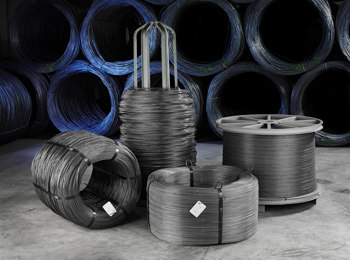دسمبر . 11, 2024 12:02 Back to list
pvc coated gabion mattress
The Benefits and Applications of PVC Coated Gabion Mattress
In the realm of civil engineering and environmental protection, the use of gabion mattresses has emerged as a formidable solution for various challenges. One notable innovation in this field is the PVC coated gabion mattress. This highly durable and versatile structure has gained popularity due to its remarkable properties and diverse applications. In this article, we will explore the features, benefits, and potential uses of PVC coated gabion mattresses.
What is a Gabion Mattress?
A gabion mattress is essentially a wire mesh container filled with rocks or other inert materials, designed for various structural and environmental applications. Traditionally, these mattresses are used for soil erosion control, riverbank stabilization, and as part of retaining wall systems. The introduction of PVC (polyvinyl chloride) coating has revolutionized the gabion industry by enhancing the functionality and longevity of these structures.
Advantages of PVC Coating
The primary benefit of PVC coated gabion mattresses lies in their enhanced durability. The PVC coating provides a protective layer to the underlying wire mesh, significantly improving resistance to corrosion and weathering. This is particularly important in environments where exposure to moisture and various chemicals can lead to degradation over time. The longevity of PVC coated gabions ensures that they remain effective for many years, reducing the need for frequent repairs or replacements.
Another significant advantage is the increased flexibility of design that PVC coated gabion mattresses offer. They are available in various colors and sizes, making them adaptable to different aesthetic and engineering requirements. This flexibility allows engineers and architects to integrate these structures seamlessly into their projects without compromising the visual appeal of the environment.
Environmental Benefits
pvc coated gabion mattress

Beyond their structural advantages, PVC coated gabion mattresses contribute to environmental sustainability. By utilizing natural materials like rocks in their construction, these mattresses promote biodiversity and create habitats for various aquatic and terrestrial species. Additionally, their design allows for natural vegetation to grow, further enhancing their ecological value.
Gabions also play an essential role in controlling soil erosion and managing stormwater runoff. When placed strategically along riverbanks or slopes, they help to stabilize the soil. This not only prevents erosion but also mitigates the risk of landslides, protecting both infrastructure and ecosystems.
Applications of PVC Coated Gabion Mattresses
The versatility of PVC coated gabion mattresses allows for a wide range of applications. In hydraulic engineering, they are commonly used in riverbank protection, flood control, and as retaining walls for shoreline stabilization. By effectively dissipating hydraulic energy, they help manage water flow and prevent erosion caused by fast-moving water.
In landscaping and urban design, PVC coated gabion mattresses are increasingly used as decorative elements. They can be designed to blend with the natural surroundings or to stand out as striking features in parks and recreational areas. The addition of vegetation on gabion structures also contributes to urban green spaces, promoting environmental wellness in cities.
Furthermore, the construction industry utilizes PVC coated gabion mattresses as foundation supports and in retaining wall construction. Their ability to adapt to different loads and conditions makes them suitable for various engineering applications.
Conclusion
In conclusion, PVC coated gabion mattresses represent a significant advancement in erosion control and environmental protection techniques. Their durability, aesthetic versatility, and environmental benefits make them an indispensable tool for engineers, architects, and environmentalists alike. As the industry continues to evolve, it is likely that the importance of PVC coated gabion mattresses will only grow, further solidifying their place in sustainable engineering practices. Whether used in landscaping, flood management, or ecological restoration, these innovative structures are sure to make a positive impact for years to come.
-
Why PVC Coated Gabion Mattress Is the Best Solution for Long-Term Erosion Control
NewsMay.23,2025
-
Gabion Wire Mesh: The Reinforced Solution for Modern Construction and Landscape Design
NewsMay.23,2025
-
Gabion Wall: The Flexible, Seismic-Resistant Solution for Modern Landscaping and Construction
NewsMay.23,2025
-
Gabion Wall Solutions: The Durable, Decorative, and Affordable Choice for Every Landscape
NewsMay.23,2025
-
Gabion Basket: The Durable and Flexible Alternative to Traditional Retaining Walls
NewsMay.23,2025
-
Gabion Basket: The Proven Solution for Slope Stability and Flood Control
NewsMay.23,2025
-
Versatility of Chain Link Fence Gabion
NewsMay.13,2025






